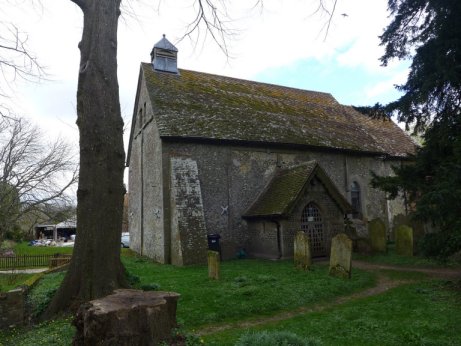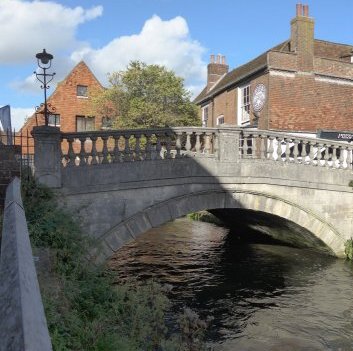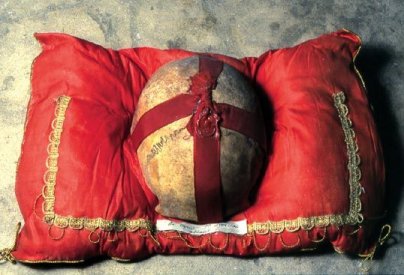In the small village of Corhampton, in the Meon valley in Hampshire, is this remarkable Saxon church, dating from 1020. There may well have been a seventh century church on this site, founded by St Wilfrid as part of his campaign to convert those recalcitrant local pagans. Unusually, the church has no dedication.

This was not a posthumous one. It is said that he was responsible for building the bridge over the river Itchen next to the eastern gate of the city. While the building was underway a careless builder bumped into a woman carrying eggs: all of the eggs fell to the ground and were smashed. Swithun happened to be there: the eggs were replaced, unbroken, in the woman's basket.
On the left of the image, we see Swithun with his crook. The woman with the basket is in the centre; it is not clear whether this is the moment that the eggs fall, or whether they are being miraculously raised up again. Who might the third figure be? The blundering builder?

The bridge has been replaced, of course, but here is the location: and next to it, the best memorial any saint can have: a pub.


As I have said, the shrine of St Swithun became a very important pilgrimage destination, and this kept the monks busy day and night dealing with pilgrims. At each successful cure, the monks had sing a Te Deum and process into the minster. This, is is said, could happen three times in a night.
At last the monks had had enough and refused to get up - until Swithun himself appeared, and made it very clear they had to obey orders!
Following the dissolution, the remains of Swithun disappeared. Whether they were burnt, scattered, or just hidden away is not known. However, not all of Swithun was in Winchester. In 1005 the then bishop, Alphege, was promoted to Archbishop of Canterbury, and he took Swithun's skull with him. For some reason, this ended up in the cathedral at Evreux, in Normandy. where it still is.

Back to page 1 Home page: explore the site